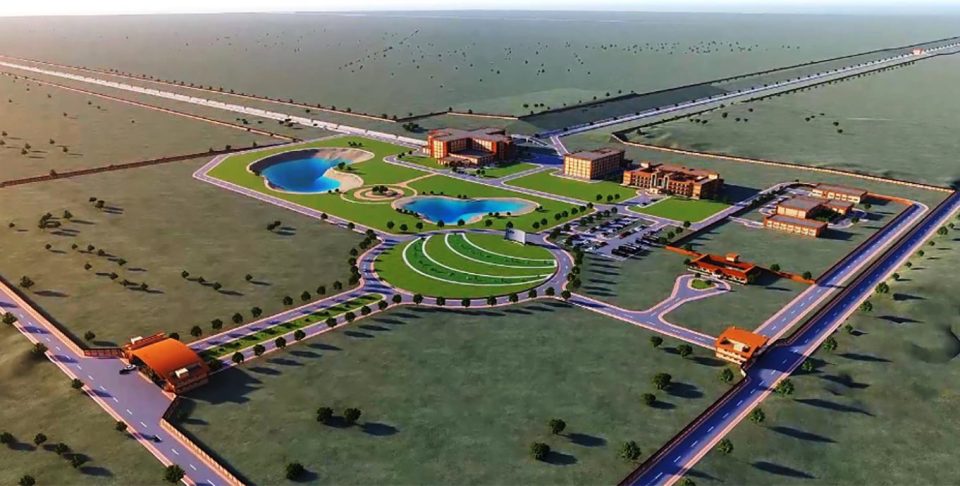
All about LIGO-India project, which has put country on elite astronomy map

Last month, the Union Cabinet cleared Rs 2,600 crore for the Laser Interferometer Gravitational-Wave Observatory (LIGO) project that will come up in Hingoli, Maharashtra, some 590 km east of Mumbai. The project, which the Centre had approved in principle seven years ago, will be jointly funded by the departments of science and technology and atomic energy besides infrastructural support from the US.
The observatory will work in tandem with four similar facilities around the world — two in the US, one in Italy, and one in Japan — and is expected to start functioning by 2030. So, what is the LIGO-India project and why is it important? Here is all you need to know about this mega project.
What is LIGO?
Laser Interferometer Gravitational-Wave Observatory or LIGO is a global network of laboratories that can detect gravitational waves, which are tiny ripples in the fabric of space and time. LIGOs have detectors designed to look for these tiny cosmic ripples. For instance, the LIGO detectors can pick up a change of distance that is several times smaller than a proton.
So far, there are four such facilities in the world. There are two LIGOs in Washington State and Louisiana in the US. The one in Italy is called Virgo. The fourth one, named Kamioka Gravitational-Wave Detector (KAGRA), is in Japan.
Also read: How will Earth meet its end? Study led by MIT scientist from Kolkata shows
What causes gravitational waves?
Gravitational waves are caused by some of the most violent events in the universe involving massive objects in motion, such as merging neutron stars or black holes, or exploding stars. Albert Einstein has first predicted the existence of gravitational waves soon after formulating the theory of General Relativity in 1915. Gravitational waves can help expand our understanding of the universe.
When LIGO made history
LIGO detected gravitational waves for the first time in 2015. Two black holes, 29 and 36 times the mass of the sun, merged 1.3 billion years ago to produce those waves. The scientists involved in the project — Rainer Weiss, Barry C Barish, and Kip S Thorne — won the Nobel Prize in Physics in 2017.
The detection confirmed Einstein’s theory that space and time are not distinct entities but are woven together in a fabric-like structure that curves, stretches, and even warps, because of gravity waves created by massive objects moving at high speeds. Since then, LIGO and its partner observatory Advanced Virgo (the facility in Italy) have detected more than 50 such signals.
Why have several gravitational wave detectors?
When a LIGO detector picks up a signal, scientists need to confirm that the source is indeed an event in space and not something on Earth, like an earthquake, traffic, or similar. One of the ways to rule out any errors is by looking for similar signals from all the detectors spread worldwide. With all the detectors working in tandem, scientists can nail down the sources of gravitational waves. India will add the fifth observatory to this elite network.
Also read: Chandrayaan-3 and Aditya L1 missions may take off by mid-2023: ISRO chief
About LIGO-India
LIGO-India was first approved in 2016. Four Indian institutes — including the DCSEM, the Raja Ramanna Centre for Advanced Technology, and the Institute for Plasma Research of the Atomic Energy Department, and the Inter-University Centre for Astronomy and Astrophysics — are part of the project, along with the California Institute of Technology (Caltech) and the Massachusetts Institute of Technology (MIT), which together operate the US-based LIGO detectors. The US National Science Foundation is also part of the project.
After the consideration of several locations, Hingoli was chosen as the project site. Around 174 acres have been earmarked for the facility. The US will reportedly provide infrastructure worth about $60 million, including hardware, technical data, and training.
How the observatory works
The LIGO detectors comprise two 4-km-long L-shaped interferometers, which are essentially vacuum chambers about 4 ft in diameter with mirrors at the end. Light rays are released simultaneously in both chambers. The rays split into two beams traveling back and forth down the arms. The light should return at the same time in both chambers. However, if a gravitational wave passes through, there is a change in the length — smaller than one-ten-thousandth the diameter of a proton — which the LIGO detectors can pick up.
Also read: Distant exo-planets could harbour life in ‘terminator zones’: Study
Significance of LIGO-India project
The LIGO-India project will make India part of a prestigious international scientific experiment. Experts say LIGO-India’s location relative to the other four gravitational wave detectors will help lend accuracy and precision to gravitational waves’ observation and detection.
“(Precisely localising the source) is very important for pointing electromagnetic telescopes to the corresponding patch of sky and look for possible electromagnetic signatures, if present,” PTI quoted KG Arun, who is part of the LIGO-India Scientific Collaboration (LISC), as explaining.
“This can be achieved only if we have a geographically well-separated global network of detectors, and LIGO-India will be extremely crucial for this,” Arun, also professor of Physics, Chennai Mathematical Institute, Tamil Nadu, told PTI.
Union Minister Jitendra Singh said at a press briefing on April 6, “In a nutshell, it (LIGO project) will add to our astronomical capabilities and will enable us to offer inputs and feedback not only to India but to rest of the world, thereby giving a global role to India through the medium of space technology.”
(With agency inputs)


